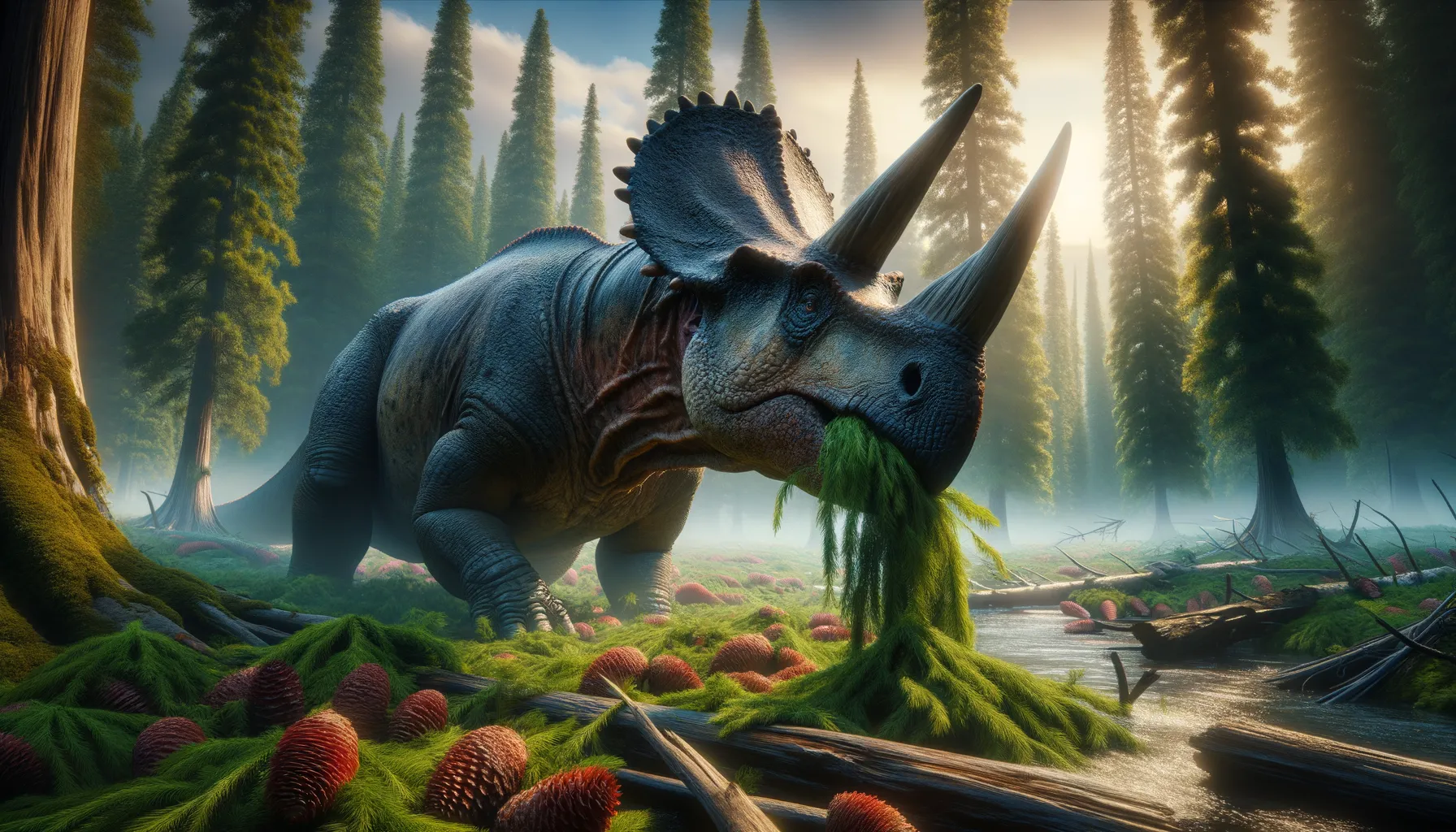
Rhinorex
The king of the large-nosed dinosaurs!
Period
Cretaceous
Length
Measured up to 9 meters (30 feet) in length.
Height
Stood about 2.5 meters (8.2 feet) tall.
Weight
Weighed around 4,000 kilograms (8,800 pounds).
Rhinorex, known as the 'nose king,' was a duck-billed dinosaur from the Late Cretaceous period, discovered in Northwestern Utah. It is distinguished by its large nasal structure, thought to serve as a means of communication or as a characteristic for mate selection. As a herbivore, Rhinorex primarily fed on conifer leaves and other plant material, spending much of its time grazing in floodplain environments.
Diet
Rhinorex was a herbivore, feeding mostly on the plant life common in its floodplain habitat. It likely consumed a variety of ferns, conifers, and flowering plants, using its duck-billed jaws to strip foliage.
Hunting
As a plant-eater, Rhinorex did not hunt. It spent its time foraging for plants, carefully selecting food with its broad, flat jaws that allowed efficient feeding on low-lying vegetation.
Environmental challenges
Rhinorex faced numerous environmental challenges, including changing climate conditions in the Cretaceous period that affected its food sources. The rising sea levels and volcanic activity of the time created dynamic landscapes that required adaptation. Additionally, it had to compete with other herbivorous dinosaurs for resources. The presence of predators also posed a survival challenge.
Speed
Rhinorex was likely slow-moving.
Lifespan
Lifespan estimated to be several decades.
First discovery
Discovered in Utah in 2014.
Fun Facts
- Rhinorex means 'Nose King' because it had a large distinctive nose.
- Rhinorex lived around 75 million years ago during the Late Cretaceous period.
- This dinosaur was a plant-eater, or herbivore, likely feeding on a variety of plants.
- It was discovered in Utah, USA, adding to the diverse dinosaur fossils found in the region.
- Unlike some other dinosaurs, Rhinorex didn't have a crest on its head, just its prominent nose.
- The dinosaur was about 30 feet long, roughly the length of a school bus.
- Rhinorex is part of the hadrosaur family, known for being duck-billed dinosaurs.
Growth and Development
Rhinorex, like many dinosaurs, experienced rapid growth in early life, helping it reach a size that deterred predators. As it aged, its growth rate would likely have slowed, focusing energy on reproduction rather than size increase. The large nasal structure probably grew more pronounced as the animal matured, significant for social behaviors or mate attraction.
Habitat
Rhinorex lived in lush, swampy environments rich in plant life, ideal for a herbivore. Floodplains and coastal areas were typical habitats, providing ample food and water resources. The dinosaur's habitat featured diverse plant species, offering a constantly available diet.
Interaction with other species
Rhinorex likely coexisted with a variety of other species, both herbivores, and carnivores. It may have traveled in herds, which could help protect against predators. The dinosaur's interactions were likely dominated by competition for food resources. Social structure and interaction with others of its species might include displays using its large nasal structure.
Natural lifespan
Rhinorex could live for several decades if environmental and survival conditions were favorable.
Reproduction
Rhinorex reproduced by laying eggs in nests, possibly constructed in carefully protected areas. It’s likely that, as with some other dinosaurs, parents might have guarded the eggs and young, ensuring their survival to maturity. Juvenile Rhinorex could have had different social structures that evolved as they gained independence.
Social behaviour
Rhinorex probably exhibited social behavior, living in groups or herds to increase protection. These groups might have used vocalizations or physical displays as a means of communication, involving its notable nasal structure. Social interactions within groups may have been crucial for mating and maintaining hierarchy.
Fossil locations
Fossils of Rhinorex have been found primarily in Utah, offering valuable insight into the species' distribution during the Late Cretaceous. The discovery site provides important ecological context, indicating a habitat of floodplains. Additional finds could reveal more about its range and how it adapted to different environments.
